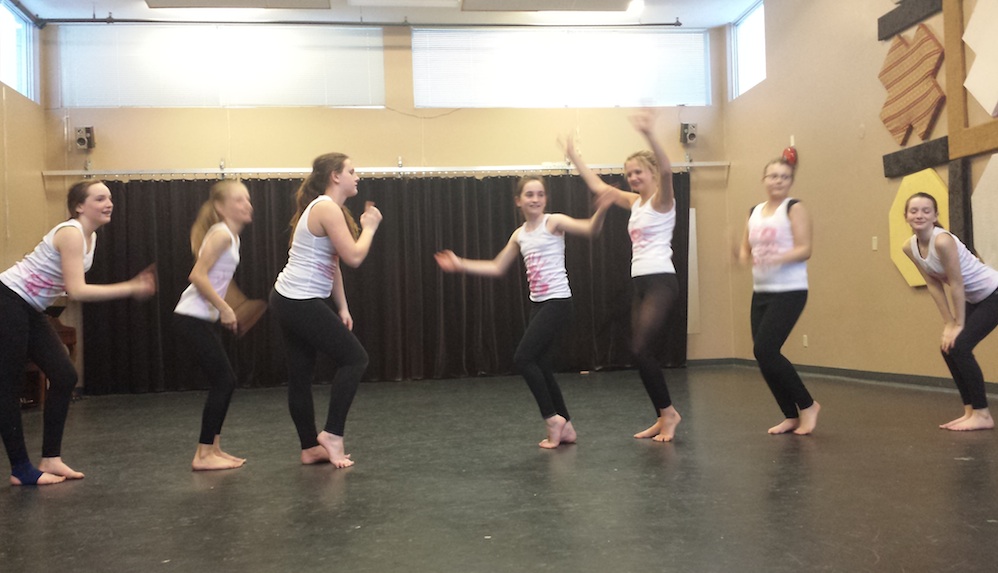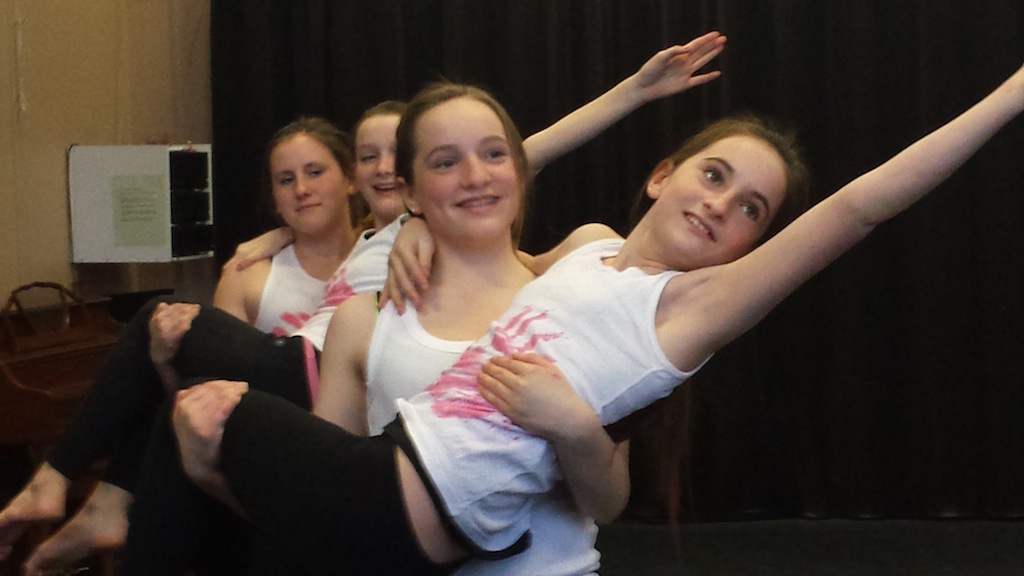Like this article? Chip in to keep stories like these coming.
“Penis points” is a phrase I never would have encountered if it weren’t for my interview with choreographer Lisa Sandlos, whose latest work explores how girls are socially constructed.
Sandlos is creating a production using research with young dancers for her PhD dissertation in Gender, Feminist and Women’s Studies at York University. She told me it’s a common phrase in the competitive dance studio world.
“There are very few boys enrolled at dance studios. So when they participate in a competition — whether partnered up or as a soloist — judges tend to give ‘penis points,'” explained Sandlos. “Some of them may be good but because they’re boys, the piece stands out.”
Sandlos, a dancer since she was five years old, is using 15 girls from a Guelph studio for a creation based on her focus groups, which included dancers aged seven to 20.
“I want to explore the over-sexualization of women, particularly young dancers in the world of competitive dance,” said Sandlos. “Dance uses the body in such a powerful way [and] it can be for women, a healing process.”
Sandlos went to the Guelph studio because it has a non-competitive atmosphere and trains dancers in ways that are not gender-specific or sexualized.
“It’s not acceptable to see seven-year-old girls gyrating on the floor,” said Sandlos, who noted that’s what can happen in competitions. “[It’s because] the business model for studios training dancers that go into competition tends to be inclined towards sexy, erotic dancing.”
Unfortunately, what happens is that type of display “becomes normalized.” Sandlos would like to see the dancers negotiate the terms of how they present their bodies.
How does dance feel in your body?
For ReGirling the Girl, Sandlos is also seeking a videographer to help her chronicle the process as she rehearses.
The first performance will be invitation-only at the Swansea School of Dance in Toronto on March 29. A public showing is slated for May 12 and 13 at the River Run Centre in Guelph. Sandlos has also gotten a couple of invitations to showcase the piece with other organizations and is open to more performance opportunities.

Photo credit: Lisa Sandlos
During rehearsals, the choreographer created some exercises in order to make a more collaborative piece.
“I placed magazine ads of women in sexy poses on the edges of the dance floor, but didn’t let them see it at first,” said Sandlos. “Then I asked them: how does dance feel to you in your body? So they danced it out and I saw a lot of free, expansive and joyful movement.”
Afterwards she asked each dancer to go to the images and pick one of the ads and strike a pose.
“If you dance that pose, what happens?” she urged the dancers to do. “The whole room was moving in a very stilted and restricted way. [Then] I noticed one girl barely budged and I asked her, why? She said: ‘It’s really hard to move when you’re naked and you’re holding a lamp in your lap.'”
Sandlos also inquires of her dancers: “What is your experience of the world? And how does that express itself in your movement? What are the restrictions and how do you resist being boxed in?”
‘Keep Young and Beautiful’
In addition, Sandlos is utilizing famous quotes from notable women throughout the performance — which show up as voice recordings from the dancers themselves. The title of the show is a take on the observation made by American gender theorist Judith Butler: “the girl is girled.” Another quote used is Simone de Beauvoir’s famous proclamation: “One is not born, but becomes a woman.”
The work is divided into four parts. The opening section has the girls clad in costumes smeared with pink paint. The next chapter is a reference to the 1920s in which the Eddie Cantor song “Keep Young and Beautiful” is juxtaposed with Annie Lennox’s more “tongue-in-cheek” re-do.
“There are incredible YouTube videos of showgirls in the 1920s dancing to Cantor’s song,” observed Sandlos. “The concept that gender and sexuality is socially constructed comes up over and over again in my research.”
The third section will be a “subversive take” on Robin Thicke’s twerking-styled videos and the final section will have the dancers interpret Maya Angelou’s poem, Phenomenal Woman.
“Beauty lies within,” responds Sandlos when asked why she chose the poem. “It’s not objectified from the outside. Her words are a form of movement. It’s her inner self coming through movement.”
She starts to quote the opening lines to me:
“Pretty women wonder where my secret lies
I’m not cute or built to suit a fashion model’s size
But when I start to tell them
They think I’m telling lies.
I say,
It’s in the reach of my arms,
The span of my hips,
The stride of my step,
The curl of my lips.
I’m a woman
Phenomenally.”
June Chua is a Toronto-based journalist who regularly writes about the arts for rabble.ca.
Like this article? Chip in to keep stories like these coming.




